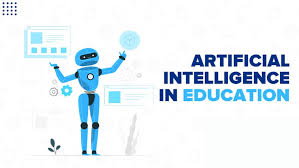Introduction:
The role of technology in education has evolved significantly over the years, transforming traditional teaching and learning methods. Several trends and challenges characterize this dynamic relationship.

The role of technology in education has evolved significantly in recent years, bringing about both trends and challenges. Here are some key aspects to consider:
Certainly! If you’re interested in reading more detailed and up-to-date perspectives on the role of technology in education, trends, and challenges, you may want to explore blogs dedicated to educational technology.
Trends:
Certainly! Here are some more specific trends within the broader context of the role of technology in education:
Microlearning:
Short, focused, and easily digestible learning modules are gaining popularity. Microlearning allows students to absorb information in small increments, enhancing retention and accessibility.
Edutainment:
Educational content combined with entertainment elements is on the rise. Incorporating game elements, such as points, badges, and leaderboards, into educational activities to make learning more interactive and competitive.

Social Learning Platforms:
Platforms that facilitate collaboration, discussion, and knowledge sharing among students are becoming more prevalent. Social learning platforms encourage peer-to-peer interaction and the exchange of ideas.
Virtual Reality (VR) in Education and Augmented Reality (AR):
AR and VR technologies are increasingly used to create immersive learning experiences. Virtual field trips, simulations, and 3D modeling enhance understanding in various subjects.
Smart Classrooms:
Classrooms equipped with interactive whiteboards, smart projectors, and other technology tools foster interactive teaching and learning experiences. These tools support real-time collaboration and engagement.
Open Educational Resources (OER):
The use of freely accessible and openly licensed educational materials, including textbooks, videos, and course content, is growing. OER promotes affordability and accessibility in education.
Adaptive Assessments: Assessment tools that adapt to the individual progress of students are becoming more common. These assessments dynamically adjust difficulty levels based on a student’s performance, providing targeted feedback.
Cloud-Based Learning:
Cloud computing facilitates access to educational resources from any location and allows for seamless collaboration. It also supports the storage and sharing of large datasets and multimedia content.
Artificial Intelligence for Personalized Feedback:
AI algorithms analyze student performance data to provide personalized feedback and recommendations. This helps identify areas for improvement and tailors educational content to individual needs.

Global Collaboration and Cross-Cultural Learning:
Technology enables students to connect with peers globally, fostering cross-cultural understanding and collaboration. Virtual exchange programs and collaborative projects broaden students’ perspectives.
Blockchain Credentials:
Blockchain technology is used for secure and tamper-proof verification of academic credentials. This trend enhances the credibility and transparency of educational qualifications.
Robotics and Coding Education:
Introduction of robotics and coding into the curriculum aims to develop students’ computational thinking and problem-solving skills. Educational robots and coding platforms make learning these skills more interactive. As technology continues to advance, these trends are likely to evolve, with new innovations shaping the landscape of education.
Edutainment strives to create a positive and enjoyable learning experience, breaking away from traditional, sometimes passive, educational methods. As technology continues to advance, edutainment will likely continue to evolve, incorporating new and innovative approaches to engage learners.
Challenges:
Certainly! Here are some more specific challenges associated with the integration of technology in education:
Digital Literacy Gaps:
Not all students have the same level of digital literacy. Addressing the digital skills gap among both students and educators is crucial to ensure effective use of technology in education.
Equitable Access to Devices and Internet:
The availability of devices and reliable internet access is not uniform across all communities. Ensuring equitable access to technology can be challenging, leading to a digital divide.
Teacher Resistance and Training:
Some educators may resist incorporating technology into their teaching methods due to a lack of familiarity, comfort, or training. Adequate professional development is essential to overcome this challenge.
Data Management and Security Concerns:
Educational institutions must navigate complex issues related to data management, privacy, and security. Safeguarding student information and complying with data protection regulations are critical.
Lack of Standardization: The absence of standardized technologies and platforms can create interoperability issues. Inconsistent standards may hinder the seamless integration of different educational tools and systems.
Financial Constraints:Many educational institutions, especially those in underfunded areas, face financial constraints that limit their ability to invest in technology infrastructure, devices, and software.
Short Technology Lifecycles:
The rapid pace of technological advancements leads to short lifecycles for devices and software. This can result in challenges related to maintenance, upgrades, and compatibility issues.
Quality Assurance of Online Content:
Ensuring the quality, accuracy, and relevance of online educational content can be challenging. Without proper oversight, there is a risk of students being exposed to misinformation or substandard materials.
Balancing Screen Time:Excessive screen time can have negative effects on students’ health and well-being. Striking a balance between digital and non-digital activities is crucial for maintaining a healthy learning environment.
Resistance from Traditional Educational Models:
Traditional educational models and practices may resist change, hindering the adoption of innovative technologies. Overcoming institutional inertia and fostering a culture of innovation can be challenging.
Cybersecurity Threats: Educational institutions are susceptible to cybersecurity threats, including data breaches and ransomware attacks. Protecting sensitive information and maintaining a secure digital environment is an ongoing challenge.
Ethical Use of Technology:
Addressing ethical concerns, such as algorithmic bias in educational technologies and the responsible use of student data, requires careful consideration and ethical guidelines.By addressing these challenges, educators, policymakers, and technology developers can work towards creating a more inclusive, secure, and effective technological landscape in education.
Addressing these challenges requires collaboration among educators, policymakers, technology developers, and other stakeholders to establish ethical frameworks and guidelines for the responsible use of technology in education.
Conclusion:
In conclusion, the evolving role of technology in education is marked by transformative trends and pressing challenges. Digital platforms, AI, VR/AR, and collaborative tools enhance learning, providing personalized and engaging experiences. However, the digital divide, teacher training, privacy concerns, and the cost of implementation remain formidable challenges. Achieving a balance between technology integration and traditional methodologies is essential.

